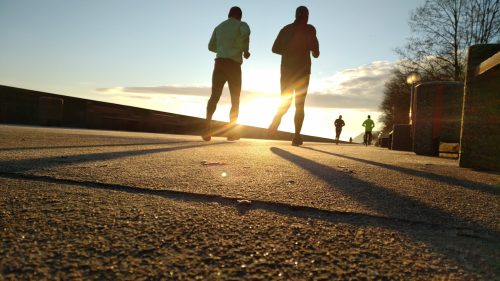Walking is a daily activity enjoyed by many people, whether it's enjoying nature, strolling around town, or spending time with a partner or pet.
However, if you suffer from back pain, you may be wondering if walking could make your condition worse. In this article, we'll share the practical tips I give my patients for walking with back pain.
Important points to remember
- Walking is beneficial for your health, but some conditions require adjustments to avoid worsening back pain.
- If you suffer from conditions such as herniated discs, spondylolisthesis or lumbar osteoarthritis, walking may sometimes be contraindicated.
- There are simple adjustments like reducing stride length or contracting abdominal muscles to walk without pain.
- Walking that is appropriate for your condition, with frequent breaks and a slower pace, can help relieve back strain.
- Following a progressive walking program based on your abilities is essential to improve your tolerance for this activity.
Walking with back pain: is it advisable?
It is well known that walking has many health benefits. It improves blood circulation, stimulates the release of endorphins, reduces the risk of cardiovascular disease and increases life expectancy. But when you suffer from back pain, is walking always recommended?
In some situations, walking is contraindicated. For example, if you suffer from a severe heart, lung or osteoporosis condition, or an acute injury such as a lumbago or a fracture, it is best to avoid walking until healed.
Additionally, if you notice significant lameness, caused by a sciatica or hip osteoarthritis, this can cause compensations that make pain worse elsewhere in your body.
people suffering herniated discs, lumbar spinal canal stenosis or spondylolisthesis, whose pain increases with prolonged standing, should also avoid walking without the advice of a healthcare professional.
9 Adjustments to Walk Without Pain
If you enjoy walking and don't want to give up the activity, there are simple adjustments to help you walk while reducing back pain.
- Take regular breaks to sit down
Taking sitting breaks helps relieve back strain and makes walking more tolerable. It also helps increase the amount of time you can walk without pain. - Reduce walking speed
Walking more slowly reduces the impact on your spine and discs, allowing you to walk longer without making your pain worse. - Shorten the length of the steps
Taking smaller steps reduces strain on the pelvis and spine, thereby decreasing mechanical stress on the back. - Contract the transverse abdominal muscle
Contracting this muscle, located deep in the abdomen, supports and stabilizes the lumbar vertebrae. To activate it, imagine holding back the urge to urinate while pulling your belly button in slightly. - Change posture while walking
Lean forward slightly or sit up straight, whichever feels best for your pain. A slight change in posture can reduce stress on your spine. - Take deep breaths
By breathing deeply while walking, you increase muscle oxygenation and reduce tension, contributing to better well-being. - Wear suitable shoes
Shoes with good support and shock absorption help prevent pain while walking. - Avoid uneven surfaces
Prefer to walk on flat ground to avoid the risk of injuries and false movements. - Using walking aids
If necessary, walking poles or a cane can help you walk longer and stabilize your balance.
Progressive walking program
For those who want to walk despite their pain, here is a progressive program that will help you increase your tolerance for this activity.
1 Week: Walk for 5 minutes, rest for 5 minutes and repeat this cycle 2 times (10 minutes of walking in total). Repeat this routine 4 times a week with one day of rest in between each session.
2 Week: Walk for 10 minutes continuously, 4 times a week. Maintain a moderate pace to avoid making the pain worse.
3 Week: Walk for 10 minutes, rest for 5 minutes, then walk for 10 minutes again (20 minutes total walking). Repeat this program 4 times a week.
4 Week: Walk for 20 minutes continuously, 4 times a week. At this point, you should notice an improvement in your walking tolerance.
For further information: Free 21-day program against back pain
To help you resume physical activity safely, I invite you to try my 21 day program against back pain, 100% free.
👉 Sign up here for the 21 Day Back Pain Program
For a more comprehensive approach, discover Lombafit Studio, a platform dedicated to guided exercises to relieve and prevent back pain.
👉 Discover Lombafit Studio here
References
Michel Benoist (2002). Natural history of lumbar disc herniation and radiculalgia. https://doi.org/10.1016/S1169-8330(02)00302-2
My name is Anas Boukas and I am a physiotherapist. My mission ? Helping people who are suffering before their pain worsens and becomes chronic. I am also of the opinion that an educated patient greatly increases their chances of recovery. This is why I created Healthforall Group, a network of medical sites, in association with several health professionals.
My journey:
Bachelor's and Master's degrees at the University of Montreal , Physiotherapist for CBI Health,
Physiotherapist for The International Physiotherapy Center


